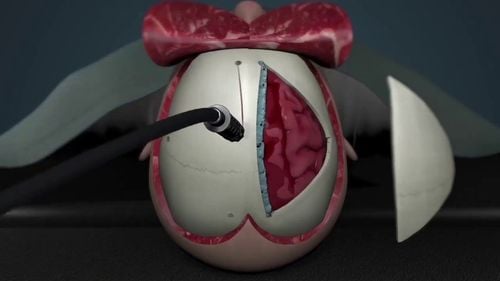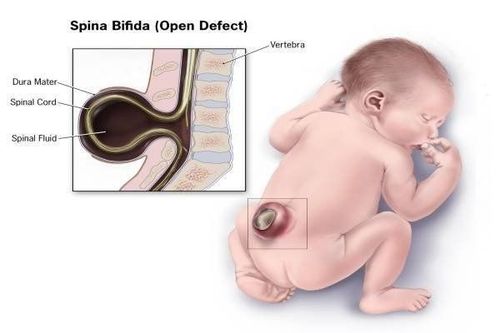This is an automatically translated article.
Indications for endoscopic surgery for treatment of skull base hernia in cases of congenital meningeal hernia; due to trauma and post-operative meningeal herniation. Contraindicated in case the patient is suffering from acute or subacute sinusitis due to bacterial infection or meningeal herniation of the frontal sinus.
1. What is a hernia of the base of the skull?
The skull base has 3 layers:
Anterior layer: Created by the frontal bone in the middle with the ethmoid fragment, the two sides have eye sockets. Middle floor: There is a pituitary pit in the middle, an optic fissure in front, a cavernous sinus and a temporal fossa on both sides. Posterior layer: The middle has basal groove, occipital foramen, occipital crest, and internal occipital mound. The other two sides are cerebellar fossa. Anterior basilar hernia is a herniation of part of the brain parenchyma and meninges into the nose or anterior basilar sinuses. Using transnasal endoscopic surgery to treat these lesions is highly effective and significantly reduces the complication rate and hospital stay compared to other traditional treatments

Phẫu thuật nội soi qua đường mũi mang lại hiệu quả cao
2. Laparoscopic surgery for hernia of the base of the skull
2.1. Indications and contraindications for endoscopic surgery for treatment of skull base hernia Indications for endoscopic surgery for treatment of skull base hernia in the following cases: Congenital meningocele, trauma and posterior meningocele surgery. Contraindications to endoscopic surgery for treatment of skull base hernia: The patient is having acute or subacute sinusitis due to bacterial infection; meningeal hernia in front of frontal sinus.

Nội soi điều trị chống chỉ định với người bị xoang cấp
2.2. Steps to perform laparoscopic surgery for hernia treatment of skull base Step 1: Prepare endoscopic instruments with camera and high-definition screen, led light source, optic: 00, 300, 700, video and image recording system intraoperative photo. Transnasal sinus surgery kit, using high-speed diamond drilling system; navigation system Navigation; electrocautery suction hemostatic device, Bipolar forceps, Surgical, Floseal; craniofacial closure materials Step 2: Clinical examination for people who need laparoscopic surgery to treat herniated skull base. Step 3: Determine the exact location of the leak on the image; cranial magnetic resonance imaging, CT film to evaluate the structure of the base of the skull; Step 4: Find the location of the hernia under the endoscope under the guidance of preoperative imaging, cut out the hernia, remove the surrounding mucus. Step 5: Using soft tissue, fascia temporomandibular, thigh muscle. If the hernia hole is more than 10mm, put a support plate with cartilage and bone septum. Then, use bio-glue to create adhesive. In the case of large fistulas, use a multilayer nasal graft or a nasal septum with a pedicle for patching. In case of need, use a foley tube to inflate the graft to support the graft. Drain the lumbar CSF if the hernia is larger than 1cm or there is increased intracranial pressure for 3-5 days. 2.3. Follow up after surgery Monitor pulse, blood pressure, respiration... Antibiotic treatment penetrates into CSF: 3rd generation cephalosporin, 4th generation Clean nose and throat after surgery Avoid coughing, sneezing, constipation after surgery Surgery Remove meche or catheter after 48 hours. Vinmec International General Hospital with a system of modern facilities, medical equipment and a team of experts and doctors with many years of experience in neurological examination and treatment, patients can completely rest in peace. examination and treatment center at the Hospital.
To register for examination and treatment at Vinmec International General Hospital, you can contact Vinmec Health System nationwide, or register online HERE.













